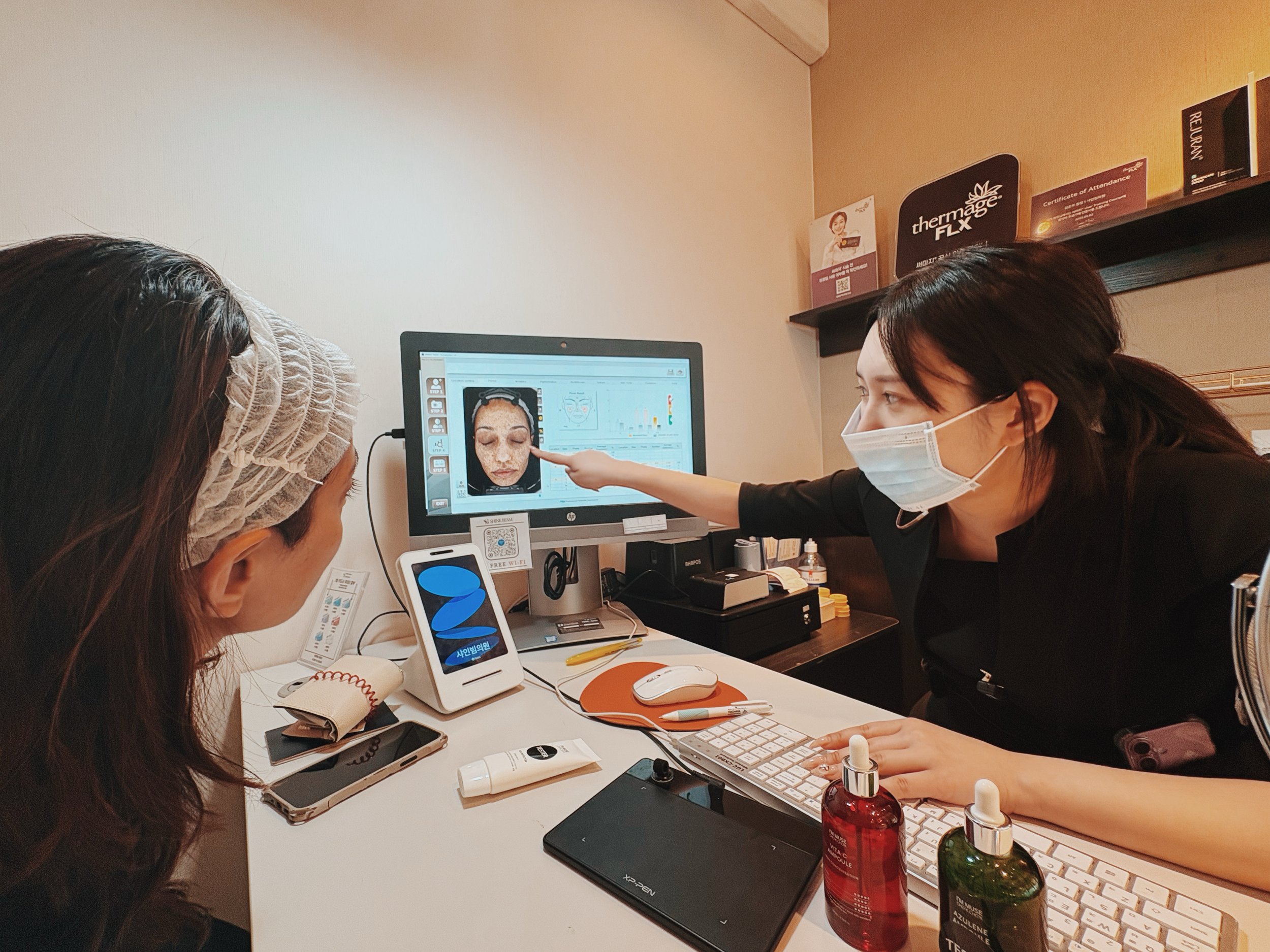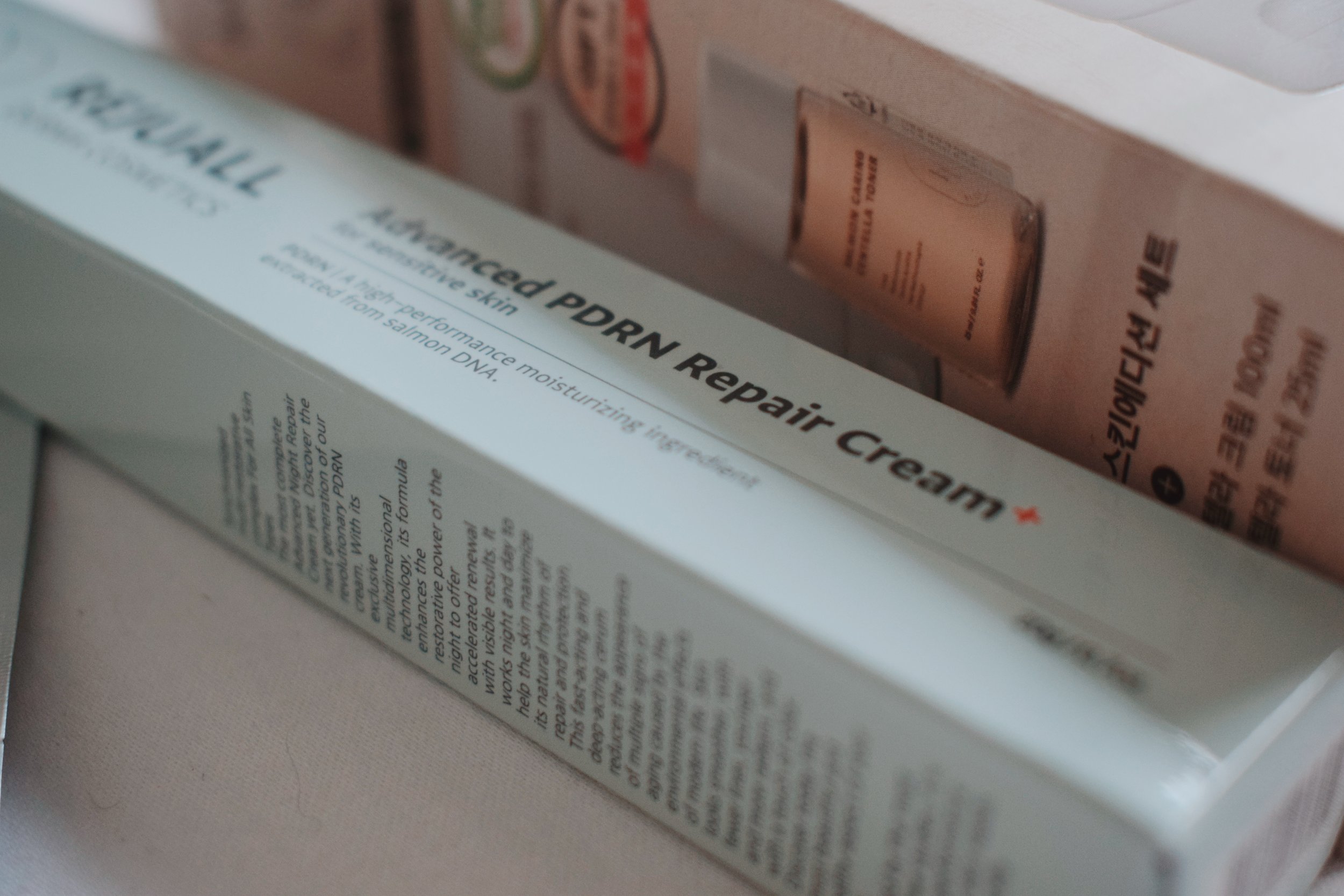5 Skincare Lessons I Learned in Seoul—And Which Ones I’m Keeping
Discover the top Korean skincare secrets I learned in Seoul, from hydration and barrier support to professional treatments and SPF habits. Which one are you including in your routine?
I just got back from a whirlwind trip to Seoul, South Korea—and wow, all I can say is that, I now absolutely understand why it’s become the skincare capital of the world.
Walking down the streets of trendy neighborhoods like Hongdae, or Seongsu, it’s clear how much time, effort, and pride the average Korean—both women and men—put into their appearance. An entire population of people with immaculate hair, skin, makeup, and fashion, just for a day of shopping? It wasn’t something I was used to seeing. It was even a little unnerving at times.
And then there’s the skincare. I’ve done my time researching and writing about skincare, so I thought I had it all figured out. But after whiling hours away in their beauty stores, chatting with locals about their routines, and even sitting down for a skin consultation at a dermatology clinic, I realized that Korean skincare is on a whole different level.
The approach is gentler, more holistic, and deeply rooted in prevention rather than just fixing problems as they arise. Let’s just say my suitcase came back heavier, and my skincare philosophy a whole lot wiser. So here are the top five lessons I learned from Koreans about skincare—and how they’ve made me rethink the way I approach my routine.
1. Hydration and Barrier Support Are Everything—But Watery Textures Reign Supreme
If there’s one thing Koreans take seriously, it’s hydration—but without the heaviness of thicker creams. Instead, they love layering lightweight products to deeply nourish the skin. Instead of relying on a single heavy moisturizer, I saw people using toners, essences, ampoules, and even daily sheet masks—all with hydrating ingredients like hyaluronic acid, panthenol, and centella asiatica—before sealing everything in with an equally lightweight moisturizer.
During my visit to a skin clinic in Seoul, the skin consultant talked about how dehydrated my skin was but advised me against using any oil-based, thicker, or more occlusive products. She promptly loaded up the Olive Young website on her laptop, and pointed me in the direction of several watery toners to help plump up my skin instead.
Equally important is barrier support. While Western skincare often focuses on fixing skin issues with strong actives, Koreans prioritize keeping the skin healthy to prevent issues in the first place. I noticed that ingredients like ceramides, squalane, and probiotics are everywhere because they help strengthen the skin’s barrier and keep irritation at bay. It’s all about maintaining that bouncy, resilient skin instead of constantly trying to fix damage.
2. Less Reliance on Harsh Actives
I’m someone for whom pure vitamin C and a good retinoid have become skincare routine staples, so I was surprised to find how rare it is to find these ingredients in Korean skincare. Instead of going all-in with aggressive actives, Koreans opt for gentler formulations that provide long-term benefits without compromising the skin barrier.
At one of the largest Olive Young stores I visited, I noticed a clear distinction in how products were categorized. There was a dedicated section for "Daily Skincare", featuring hydrating and nourishing toners, essences, serums, and moisturizers—basically, products designed for everyday use to maintain skin health. And then there, there was the sleek, chemistry lab-style "Ingredients Bar" section, which housed products with stronger active ingredients, like retinol or the ever-popular VT Reedle Shot. The way these products were positioned gave me the impression that they were intended only for occasional use.
3. Skincare and Professional Procedures Go Hand in Hand
In Seoul, going to a dermatologist or aesthetic clinic is just as common as buying a new serum. Koreans don’t just rely on skincare products alone—they combine their routines with regular skin treatments to maintain their glow.
And the best part is that these treatments don’t cost an arm and a leg either! I got a skin analysis, a consult, and 3 recommended treatments (all non-invasive), for a total cost of US$170—and this was at a clinic clearly aimed at foreigners, so the prices were probably far higher than if I had gone to a local clinic.
Even invasive treatments, like the famous PDRN (salmon DNA) injections, botox or filler, are seen as common place. And while I wasn’t personally interested in injectables, I did observe how nonchalant the culture around them was.
In general, for Koreans, skincare isn’t just about what you apply topically—it’s about a holistic approach that includes professional treatments too.
4. SPF Is an All-Day, Every day, Multiple Times a Day Commitment
We all know sunscreen is important, but Koreans take sun protection to the next level. Not only did I see people reapplying SPF religiously ever couple of hours—even indoors—I saw sun-protective hats, visors, and just staying out of the sun’s way in general. Even my skin consultant told me, in no uncertain terms, that many of my skin concerns would disappear if I was just more disciplined with the sunscreen application (and here I thought I was pretty good at that).
It definitely helps that Korean sunscreen formulas are so cosmetically elegant and lightweight compared to most of their western counterparts. You can layer them on a few times a day without feeling greasy or sticky. No wonder they have no excuse to skip it!
5. How You Apply Skincare Matters Just as Much as What You Apply
Obviously I’ve seen the social media ladies delicately patting their skincare products into their faces, but it’s become clear to me that this is more than a TikTok trend. Koreans don’t just focus on what products they use—they pay as much attention to how they apply them. Instead of aggressively rubbing in creams or serums, the emphasis is on gentle application techniques—like patting and pressing—that enhance absorption and minimize irritation.
My skin consultant emphasized the important of applying my skincare in this manner, and even spending time massaging my face. For most Koreans, skincare isn’t a chore that needs to be completed, it’s a part of their day they enjoy. They relish taking their time to work in each layer, ensuring that products fully absorb before moving on to the next step. Some even use their hands to warm up their skincare first, making it easier for the skin to take in all the goodness.
This slow, intentional approach made me rethink how I apply my own products—skincare isn’t just about slathering on formulas; it’s about giving them the best chance to work effectively.
Final Thoughts: What I’m Taking Home With Me
After immersing myself in the world of Korean skincare for a week, there are some things I’m taking with me, and some things I’m ignoring.
Prioritizing hydration and barrier health is definitely top of my list. I could tell that my skin felt plumper and more hydrated as soon as I switched to Korean toners, and I’m loving the gentle products I bought over there. Taking my sun protection even more seriously than I already do is also going to be a focus for me (and I bought an amazing sunscreen spray to help me do it). Finally, I’m giving myself the time and space to enjoy the process of skincare instead of rushing through it.
However, I’m not sold on everything Korean skin. When it comes to my actives, for example, you’re going to have to pry them out of my cold, dead hands. Don’t come for my vitamin C or my retinoid. I will die on that hill.
In-clinic treatments and procedures, especially the invasive kind, are also something I’m not sold on quite yet. I enjoy a monthly facial but getting botox or fillers during my lunch break is still a step too far.
Would you adopt any of these Korean skincare habits? Let me know in the comments!
About The Skinimalist
Hi, I’m Mal, a 30-something recovering skincare addict, and this is my blog. A space where I attempt to de-influence you from chasing trends and buying more skincare products you may not need.






Curious about exosomes in topical skincare? I used Medicube’s viral One Day Exosome Shot to separate hype from reality.